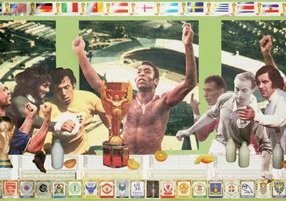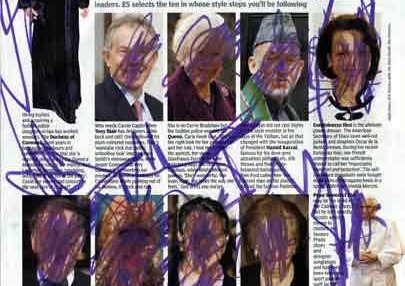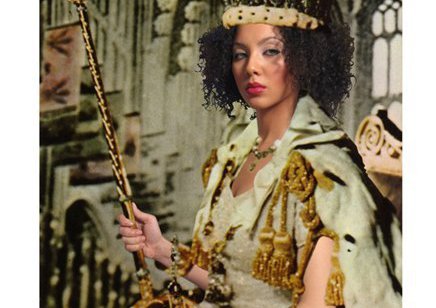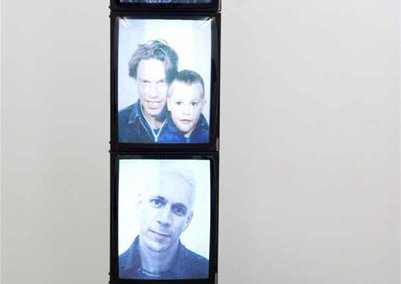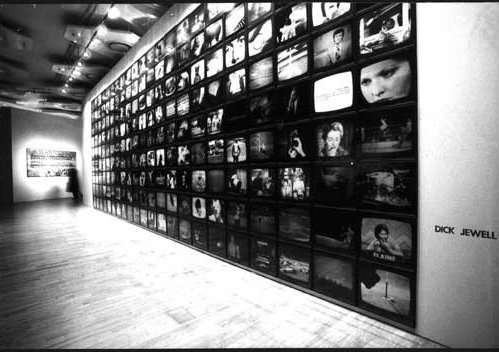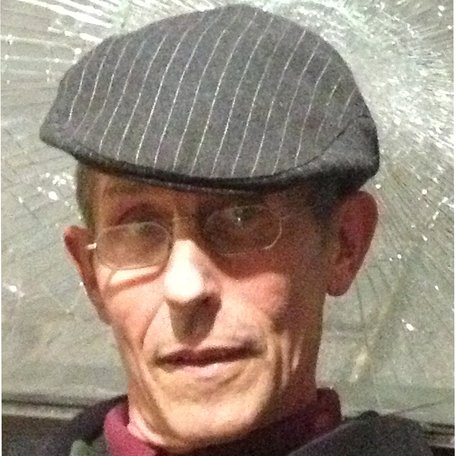
Dick is an artist/printmaker and filmmaker who still continues to work commercially as a cameraman within both the fashion and music industries.
Dick graduated from the Royal College of Art (Printmaking MA) in 1978. He exhibited at Waddington Galleries and New Contemporaries while still at the RCA.
In 1979 he published Found Photos and participated in Young British Photographers, New York, and Lives, Hayward Gallery, London. His first solo exhibition at Chapter Arts Centre Cardiff in 1980 was followed by group shows including the Stedelijk Museum, Amsterdam, and the ‘Summer Show’ at the Serpentine Gallery, London. In the 1980s he ran a record label, designing and releasing albums for artists including Gregory Isaacs and Prince Far I, and directed music promos for artists including Neneh Cherry and Massive Attack. Since then he has directed and made over 50 documentary films and videos, primarily on the subjects of artists, dance and club culture.
These films of the 1980s and early ’90s have shown extensively at film festivals and also at art galleries including the Venice Biennale, Tate Liverpool, MOMA Sydney, the Victoria and Albert Museum and the ICA. His work is represented in public collections, including the Stedelijk Museum; Victoria and Albert Museum; Arts Council of Great Britain; Hayward Gallery Froebel Institute; Newport Museum; Whitworth Art Gallery; Leeds Art Gallery; Camden Libraries; Dudley Museum.
In the 1990s Dick’s documentaries continued with subjects as diverse as The Bushmen of the Kalahari and Capouera in NE Brazil, and the publication of Hysteric Glamour, 2001. Over the last 10 years, with the continued development of digital technology, Dick has been able to concentrate on his personal work within his studio practice and exhibiting nationally and internationally.
Key details
School, Centre or Area
Expertise
Gallery
More information
Practice
Dick’s work as an artist started from being a photographer interested in how photography influences and informs society, from family albums, magazines, newspapers and within both editorial and advertising contexts. These contexts in turn influenced the print mediums he would utilise and also migrated to include film.
The main subjects of his work have been studies of poses and trends within contemporary portrait photography, along with people’s attitudes towards photographs and being photographed. These are often exemplified via photomontage or animation, to illustrate the repetition of their occurrence. Found Photos, 1980, is devoted entirely to the study of discarded photobooth pictures, many that he found having to be reassembled before publishing. Attitudism, 1983–7 is a montage of portraits of 20 artists, each asked to enact the main facial expressions, happiness, surprise, fear, sadness, anger, disgust and interest for his camera. More recently his work has been concerning the use of digital photography: 750 Mug Shots (A Portrait of the Nation), 2006, reproduces 750 digital images of mugs that were online, on one day, in the endeavour of their owners to sell the mugs depicted on eBay. It represents not only a social and economic portrait, through the collectible aspects of a tea-drinking nation, but is also a visual statement on the subject of appropriation of digital imagery; this physical reproduction existing beyond the digital originals now extant. More recently he has published his third book ‘four thousand threads’ 2015. The concept of the book is that the threads between the four thousand images, which he has researched from the internet, emphasise not only the memetic spread of digital imagery online but also their consequential effect upon influencing worldwide changes in culture.
Dick’s films include The Jazz Room (40 mins), 1985, about the development of jazz dance at The Electric Ballroom, Camden. At the start of each night, the ‘film so far’ was projected above the dance floor, before continuing to shoot more material to incorporate into the film. This created an interaction between the dancers and the film that informed the development of the dance style. By the time he commenced documenting the nightclub Kinky Gerlinky, this method of creating an ongoing dialogue with the subject to produce a living document became more intimate. Having moved onto Video8 and later Hi-8 as a medium, by editing each night onto VHS, which was made available at ticket outlets, it allowed the protagonists to view the previous event in their homes whilst preparing to go to the next one. It was via this process, in the early 1990s, that 200 hours of Kinky Gerlinky were recorded to produce 21 episodes, which Jewell has now further digitally edited to release as one document, Kinky Gerlinky (101 mins), 2004.
Other documentaries include: Headcases (66 mins), 1988, featuring two dozen streetwise Londoners including Kathy Acker, John Maybury, Mark Lebon, etc.; The Rise of Neneh Cherry (63 mins), 1989; and What’s Your Reaction To The Show? (40 mins), 1990, about people’s reaction to viewing art, specifically the Leigh Bowery at the Anthony d’Offay Gallery. This was the first time Leigh had exhibited in an art gallery, and so with no prior reviews the reaction of the people would be their own, rather than what they were supposed to think. As with his work on paper, his most recent films have also concerned digital media. Jewell (125mins), April–August 2009, encompasses not only photography but also video and audio material bearing the artist’s surname, gathered from the Internet. The material is titled, presented in alphabetical order and imitates the aspect of multitasking on a computer screen.

